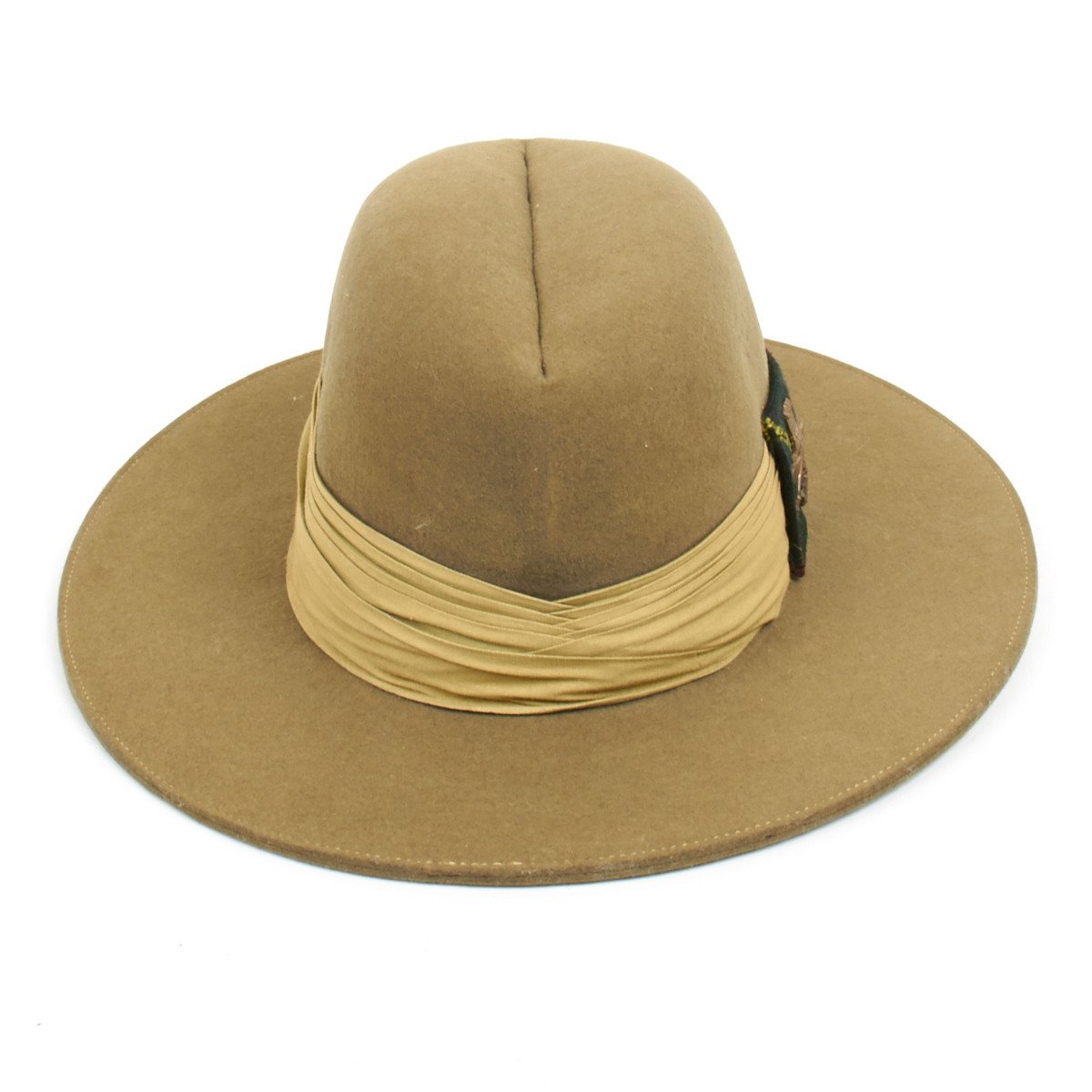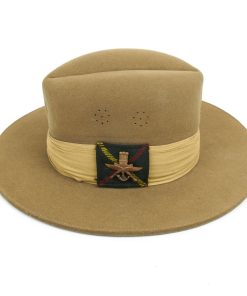Original British WWII Gurkha Slouch Hat – 1st King George V’s Own Gurkha Rifles (The Malaun Regiment) Original Items
$ 250,00 $ 100,00
Original Item: Only one available. The 1st Gurkha Rifles is a Gurkha infantry regiment of the Indian Army comprised of Gurkha soldiers of Nepalese origin. It was originally formed as part of the British Indian Army in 1815, later adopting the title of the 1st King George V’s Own Gurkha Rifles (The Malaun Regiment), however, in 1947, following India’s independence in 1947, it was transferred to the Indian Army and in 1950 when India became a Republic, it was redesignated as the 1st Gurkha Rifles (The Malaun Regiment). The regiment has a long tradition and has participated in many conflicts, including many of the colonial conflicts prior to Independence, as well as the First and Second World Wars. Since 1947 the regiment has also participated in a number of campaigns against Pakistan in 1965 and 1971 as well as undertaking peacekeeping duties as part of the United Nations.
This light khaki Gurkha slouch hat is made from thick felt with cotton wrap around the crown. There is a tartan fabric square on the right side of the wrap containing a correct WW2 double Kukri with numeral 1 over a stringed bugle horn, all beneath a set of Prince of Wales feathers.
Still retains the original leather hat band showing stamped head size of 6 1/4. This hat is in fine overall condition, with ventilation holes in either side of the felt crown.
At the time of the 2nd Boer War in South Africa, the slouch hat, worn by the Dominion Forces of the British Empire, was becoming an increasingly popular form of head dress with British troops in the field. This may have influenced the introduction of a hat of similar design within Gurkha Regiments. It was during the Waziristan Blockade in 1901, that the 1st Battalion 2nd (Prince of Wales Own) Gurkha Rifles tried out a new hat advocated by one of its officers, Lieutenant Bechar. It consisted of a several layers of cloth covered on both sides with puttoo or home spun tweed. It was criss-cross machine stitched, giving it a certain amount of stiffness to help maintain its shape. Sometimes known as the Kashmir hat, it was fitted with a light puggaree, ventilating holes and a chin strap. The whole effect resembled a slouch hat, affording protection both from the sun and the rain. 2nd Gurkha Rifles subsequently adopted the hat for field service. Regimental histories record that a similar head dress was introduced into other Gurkha Regiments during the same period. Initially procured from unofficial sources, it was eventually sanctioned by Army Headquarters and issued through ordnance channels under the nomenclature of Hats, Felt, Gurkha.
The Tibet Expedition 1903 04 became the last campaign when the Kilmarnock was worn in the field by 8th Gurkha Rifles operating at altitudes in excess of 18,000 ft. Thereafter, the Kilmarnock has only been worn on parades and ceremonial duties. The Zakka Khel Expedition, on the North West Frontier of India, in 1908 was the first campaign when the new field service head dress was worn by 5th and elements of 6th Gurkha Rifles.
Not unexpectedly, Regiments and Battalions soon began to fashion the hat to their own designs. Some wore it with either the left or right side hooked up; puggarees were added, with Regimental coloured piping; and Regimental badges and or flashes were incorporated. In the years following the 1st World War, the brim became flat and stiffened, as we know it today, and the hat was worn well tilted over one ear and a size or two smaller than necessary for effect. This laid most of the skull bare to the elements, thereby defeating the original object of the hat to give protection from the sun and rain6. Initially, Hats, Felt, Gurkha were only worn by Gurkha officers and soldiers, but photographic evidence suggests that British officers began to wear the hat in the 1920s. By the end of the 2nd World War, the hat was being worn by all ranks in most Gurkha Regiments.
Fast Shipping with Professional Packaging
Thanks to our longstanding association with UPS FedEx DHL, and other major international carriers, we are able to provide a range of shipping options. Our warehouse staff is expertly trained and will wrap your products according to our exact and precise specifications. Prior to shipping, your goods will be thoroughly examined and securely secured. We ship to thousands clients each day across multiple countries. This shows how we're dedicated to be the largest retailer on the internet. Warehouses and distribution centres can be located throughout Europe as well as the USA.
Note: Orders with more than one item will be assigned a processing date depending on the item.
Before shipping before shipping, we'll conduct a thorough inspection of the items you have ordered. Today, the majority of orders will be delivered within 48 hours. The delivery time will be between 3-7 days.
Returns
The stock is dynamic and we cannot completely manage it because multiple stakeholders are involved, including our factory and warehouse. So the actual stock may alter at any time. It's possible that you may not receive your order once the order has been made.
Our policy is valid for a period of 30 days. If you don't receive the product within 30 days, we are not able to issue a refund or an exchange.
You can only return an item if it is unused and in the same state as the day you received it. You must have the item in its original packaging.
Related products
Uncategorized
Uncategorized
Uncategorized
Uncategorized
Uncategorized
Uncategorized
Uncategorized
Uncategorized
Uncategorized
Uncategorized
Uncategorized
Australian WWII Owen MK1 Machine Carbine SMG Custom Fabricated Replica with Sling Original Items
Uncategorized
Uncategorized
Uncategorized
Uncategorized
Armoured Fighting Vehicles of the World: AFVs of World War One (Hardcover Book) New Made Items
Uncategorized
Armored Burgonet Helmet & Polearm from Scottish Castle Leith Hall Circa 1700 Original Items
Uncategorized












































































